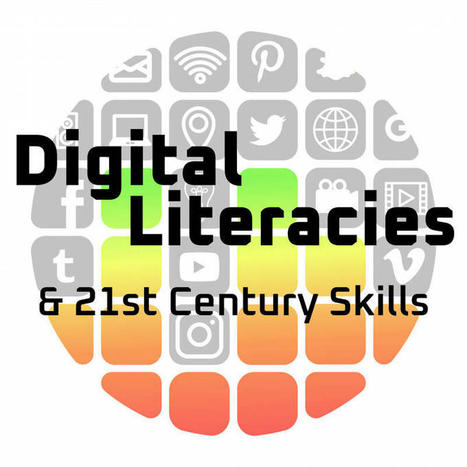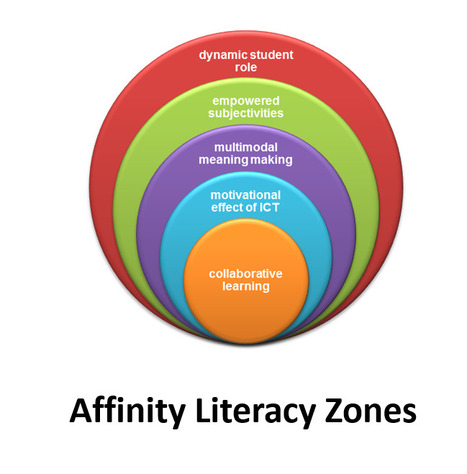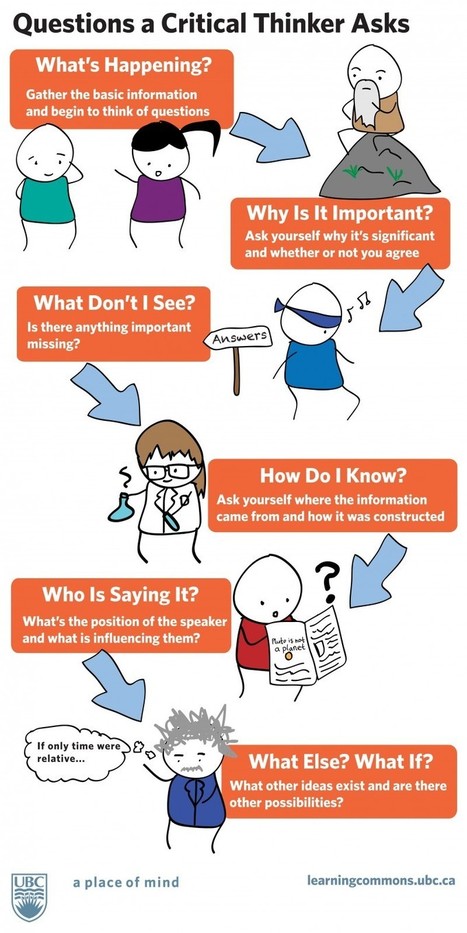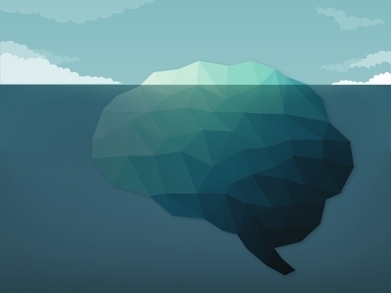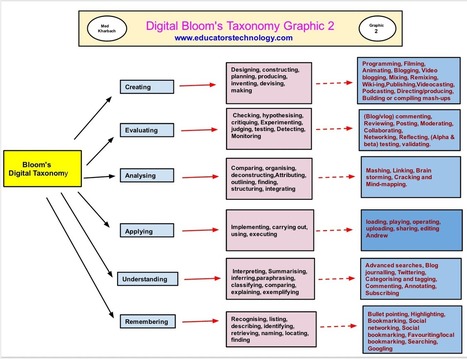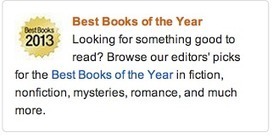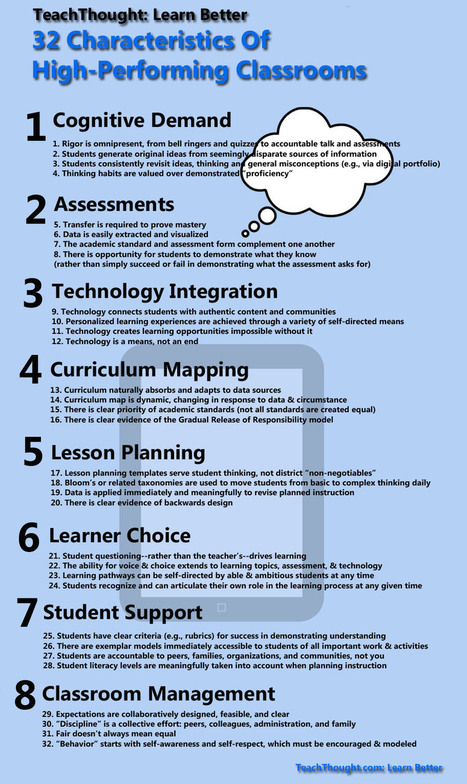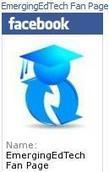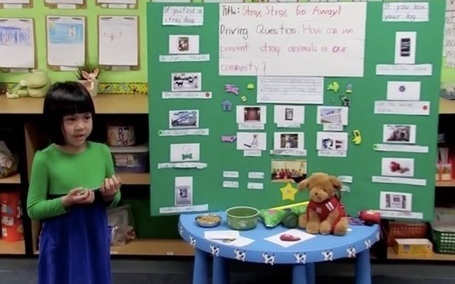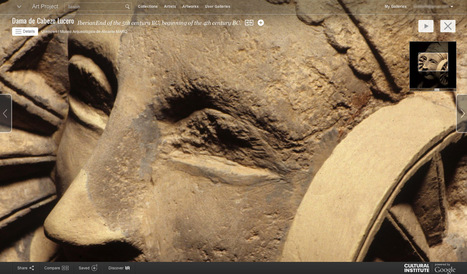 Your new post is loading...
 Your new post is loading...
On this week's podcast, Simon and Jade primarily discuss the work of Ito et al. (2020), which focuses on "connected learning," a seemingly more holistic approach to education that incorporates socio-cultural contexts, multiple literacies, and technology into curricula. With additional references to Soule and Warrick (2015), as well as Ken Robinson's talk on Changing Paradigms, we ultimately conclude that there are no alternatives to real-life interactions. Technology itself is merely a tool we can use to enhance learning experiences and our lives, but not to completely replace those human connections and interactions we need to develop crucial 21st century skills.
Via Elizabeth E Charles
Free resource of educational web tools, 21st century skills, tips and tutorials on how teachers and students integrate technology into education
Via Elizabeth E Charles
To thrive in today’s innovation-driven economy, workers need a different mix of skills than in the past. In addition to foundational skills like literacy and numeracy, they need competencies like collaboration, creativity and problem-solving, and character qualities like persistence, curiosity and initiative.
Changes in the labour market have heightened the need for all individuals, and not just a few, to have these skills. In countries around the world, economies run on creativity, innovation and collaboration. Skilled jobs are more and more centred on solving unstructured problems and effectively analysing information. In addition, technology is increasingly substituting for manual labour and being infused into most aspects of life and work. Over the past 50 years, the US economy, as just one of many developed-world examples, has witnessed a steady decline in jobs that involve routine manual and cognitive skills, while experiencing a corresponding increase in jobs that require non-routine analytical and interpersonal skills (see Exhibit 1). Many forces have contributed to these trends, including the accelerating automation and digitization of routine work.
Via Elizabeth E Charles
A blog post about 6 C's of education: critical thinking, collaboration, communication, and creativity, citizenship and character education.
Author: Stephania Savva
The core of this chapter reports on the development, implementation and evaluation of a theory based framework named Affinity Multiliteracies Practice (AMP) with the intention to provide an example of a teaching and learning approach to schooling that acknowledges students’ multiple and diverse identities, experiences and capabilities while also equipping them to become the flexible and dynamic learners required in the 21st century.
Via Stephania Savva, Ph.D, THE OFFICIAL ANDREASCY, Andreas Christodoulou, Mark E. Deschaine, PhD
In an earlier post here in Educational Technology and Mobile Learning I talked about the 8 elements of the critical thinking proces
Via Tom D'Amico (@TDOttawa)
Each of these rubrics is related to a tinkling stage of Bloom's taxonomy. And in each rubric you will find a little introduction about what the rubric is about followed by an illustrative chart of how to use it then at the end you will be given a variety of examples and activities of how to achieve the targeted thinking level with your students.
The education system needs to produce 21st century learners, but what if we are going about achieving that in entirely the wrong way?
Via Sharrock, Ivon Prefontaine, PhD
"Having a vision for the future is an natural extension of Hope and Optimism, another 21st century skill I proposed. A vision for the future enhances hope and optimism. To clarify, having a vision for the future is identifying and taking steps toward fulfilling one’s dream. It goes beyond and is qualitatively different than identifying what one wants to be when one grows up or thinking about college. It is about dreams."
Via Beth Dichter
32 Characteristics Of High-Performing Classrooms Instructional design is the strategic creation of learning experiences through intentional planning, sequencing, and data-based revision of learning. This process includes both the ways content is accessed, and the learning needs and objectives (and how they are determined) themselves. This puts instructional strategies, literacy strategies, curriculum mapping, standards unpacking, assessment design, digital literacy, and a dozen other facets of education beneath its umbrella.
One of the Most Rewarding Moments as a Teacher is Seeing the Pride in Student's Faces When They Present Something They Have Created. In the Emerging
Via Patty Ball
|
"What are 21st Century skills? Learn more about all 12 skills here: Critical thinking, creativity, collaboration, communication, information literacy, media literacy, technology literacy, flexibility, leadership, initiative, productivity, and social skills ..."
Via Leona Ungerer, Juergen Wagner
The world is morphing into a place that no one can foresee. How can we prepare students to live and work in that place?
Not long ago, people could learn job skills and use them indefinitely, but now jobs and skill sets are becoming obsolete at an alarming rate. This means that students, and later adults, need to expect and thrive on challenges and know how to turn failures into stepping stones to a brighter future.
When I was a beginning researcher I wanted to see how children coped with setbacks, so I gave 5th graders simple problems followed by hard problems—ones they couldn’t solve. Some hated the hard ones, some tolerated them, but, to my surprise, some relished them. One unforgettable child rubbed his hands together, smacked his lips, and declared, “I love a challenge!” Another said, “I was hoping this would be informative.” They didn’t think they were failing, they thought they were learning. Although this was years ago, they were already 21st century kids.
Via Elizabeth E Charles
Let's take a look at 10 useful and versatile digital age skills for students to have as they leave school for life and work in our ever-changing world.
Via Elizabeth E Charles
In an age of technological advancement, it’s easy to feel obsolete. I feel confident that education will always be needed; but, occasionally I wonder if writing education has value in a computer-driven world.
Via Elizabeth E Charles
This week, we’d like to show you a few ways you can use our free video response and reflection app, Recap, for formative assessment. The big question on many teachers’ minds is “w…
"Driving Question: How early does equal access to 21st century learning start? Prior to this project, we thought of academics and 21st century skills as separate things. Following a linear approach, first students needed to master important literacy skills, and then we could enhance the learning with integrated projects like "Stray, Stray, Go Away." We even worried that maybe 21st century skills would distract from the foundational skill like learning to read. It was thought that one was more important that the other, and guess what? We were wrong."
Via Beth Dichter
Before the internet we learned from institutions, friends, family and co-workers. Learning was a process largely influenced from local resources; schools, work, communities and civic activities. We also learned from media fed to us and media we sought in books, videos and sound. Our resources were limited by reach, access and choices. Today the resources for learning are unlimited and for the most part free. Our reach to information is unlimited and access is 24/7 which expands the venue of choices. As a result we are all learning what we didn’t know but want to know and we are being taught by others that do know.
Via Kenneth Mikkelsen, Ilkka Olander
I am facilitating an in-service on Growth Mindsets for Educators. I created an infographic, Thinglink, and Slide Presentation of resources that I am sharing below: Thinglink that contains links to...
Via Beth Dichter
What is grit? Learn more about grit and how important it is help you thrive in the 21st century in this infographic.
Via Beth Dichter
Learn more about historic moments from the last century with photos, manuscripts, archived letters, and first-hand video testimonials. Discover exhibits and collections from museums and archives all around the world. Explore cultural treasures in extraordinary detail, from hidden gems to masterpieces. Create your own galleries and share favorite finds with friends.
32 Characteristics Of High-Performing Classrooms Instructional design is the strategic creation of learning experiences through intentional planning, sequencing, and data-based revision of learning. This process includes both the ways content is accessed, and the learning needs and objectives (and how they are determined) themselves. This puts instructional strategies, literacy strategies, curriculum mapping, standards unpacking, assessment design, digital literacy, and a dozen other facets of education beneath its umbrella.
Due to the interest of my post The Other 21st Skills, I decided to individually discuss each of the skills or dispositions I proposed that are in addition to the seven survival skills as identified...
Via Beth Dichter
|



 Your new post is loading...
Your new post is loading...

